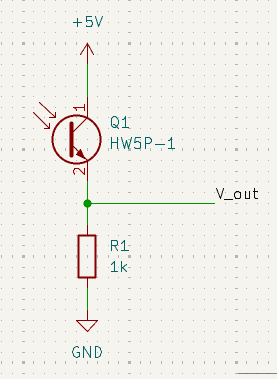Bike light duty cycle
I noticed in a video that my bike's rear light (CatEye ViZ450) appeared to be flashing, despite it being in "constant on" mode. This indicated to me that it was using pulse width modulation (PWM)—repeatedly turning on and off at a high frequency in order to appear dimmer. This surprised me, as the light does not have different brightness modes available. One can cycle between constant mode and three different flashing modes, but there is no control over brightness.
I was curious what the PWM duty cycle was, so I hooked up a quick circuit using a phototransistor (similar to my janky tachometer):


On the oscilloscope, it looked like this:


The measurements indicate it's running at 100 Hz with a 10% duty cycle. No wonder it appeared to flash on the camera, which probably had a framerate of 30 or 60 fps.
After thinking about it a little more, I realized why they used such a low duty cycle. The most intense flashing mode, presumably intended for emergencies, has a very bright flash a couple times a second. It likely uses the full duty cycle during that flash.